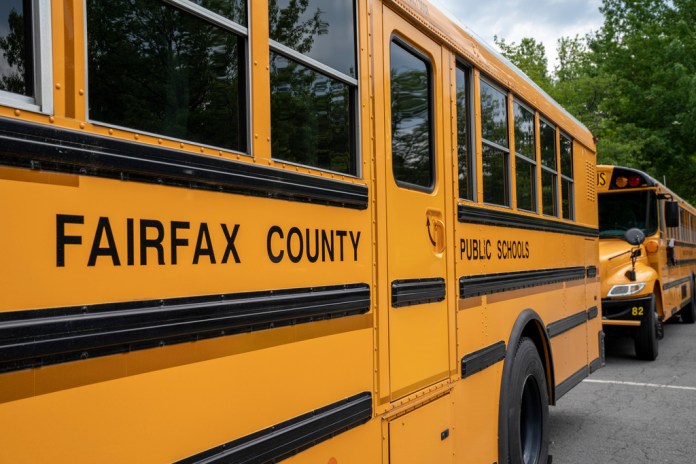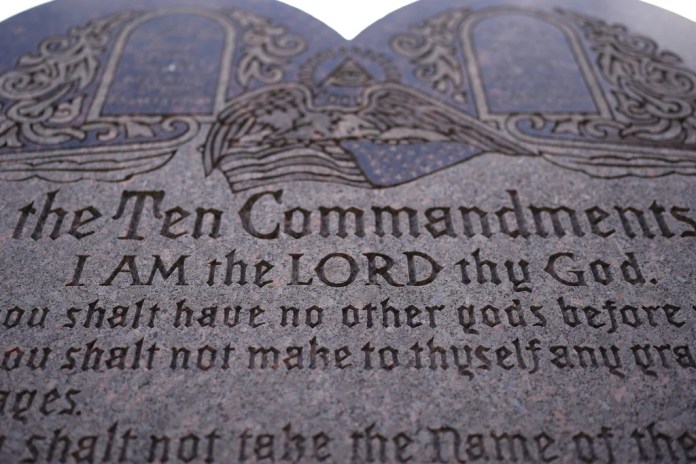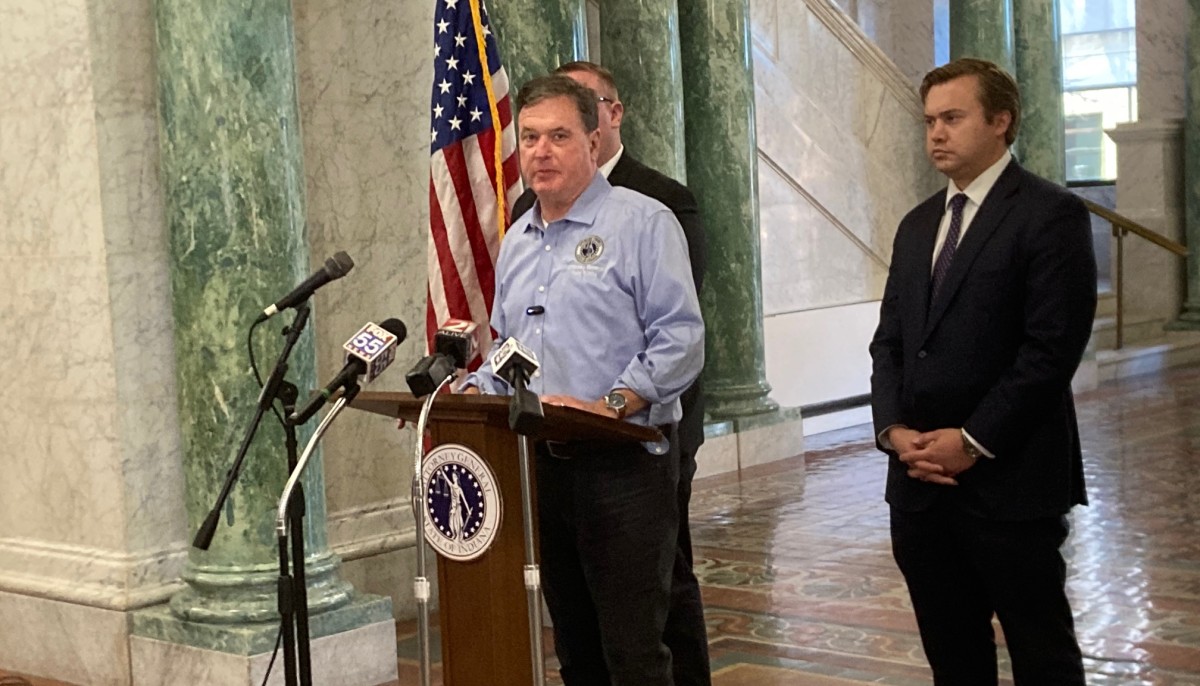Tapper To Biden’s CDC Head On Schools: You’re Demanding Things ‘We’re Never Going To Be Able To Achieve’

CNN host Jake Tapper grilled CDC Director Rochelle Walensky over why the Biden administration is struggling to get schools fully reopened across the country after top experts have repeatedly said they are safe to reopen.
Tapper specifically reminded Walensky of her prior remark that “schools should be the last thing to close and the first thing to open.”
“Really, what we have said in our guidance is that the amount of classroom activity really depends on the amount of spread in the community. We know that the amount of disease in the community is completely reflected as to what’s happening in school,” she said. “If there’s more disease in the community, there will be more in school, and that most disease in school does not come from in-school transmission, but comes from outside, from into the community. So, what we would advocate for is to have more kids in school, as our community spread comes down.”
“So, the CDC guidelines suggest schools could opt not to reopen in person classes if they’re in a red zone with the high community spread that you just referred to. According to our analysis of federal data, that includes 99 percent of American children,” Tapper said. “But you have said, quote, ‘There’s very little transmission happening in the schools.’ CDC researchers just wrote in ‘JAMA’ that quote, ‘There has been little evidence that schools have contributed meaningfully to increased community transmission.’ So, why give schools that opt not to open up?”
Walensky went through different recommendations that the administration is making based on what grade the students are in and said that in order for schools to fully reopen that there needed to be “universal masking” inside schools and a “strict six feet” of social distancing within classrooms.
“But what’s the science? Because you have said there’s, I mean, not just you, but Dr. Fauci, others have been saying for months that the schools should be opened as long as there’s masking and cleansing and social distancing, everything that we talked about,” Tapper said. “If a school is doing that, I understand if there’s a mask violation, that’s a problem. But if a school is doing that, I mean, the damage, as I don’t need to tell you, on kids, the isolation, the psychological damage, the educational loss of a year for many kids, not to mention the thousands of kids who are just slipping through the cracks, I mean, it’s hard to even calculate. And there are a lot of people out there watching who think, like, I thought the science said we should open the schools, as long as we take those safety steps. We’re taking the safety steps, and we’re not opening the schools.”
After several minutes of discussion, Tapper said that he was “dispirited after this conversation” because “I had high hopes that schools would be able to resume in person learning, because so many scientists and health officials, including you and Dr. Fauci and others, had been talking about the science supports opening the schools as much as possible.”
“I know that a lot of teachers are very concerned, and I know the teachers unions have been pushing back on this. But it sounds to me like you’re asking for 100 percent mask compliance and a number of measures that we’re never going to be able to achieve,” Tapper added. “And that makes me feel like, boy, I don’t know if the schools are ever going to open until everybody’s vaccinated.”
JAKE TAPPER, CNN HOST: And joining us now is the director of the Centers for Disease Control and Prevention, Dr. Rochelle Walensky. Dr. Walensky, thanks so much for joining us. Good to see you again.
So, you have said, quote, “Schools should be the last thing to close and the first thing to open,” unquote. Should all students be back in classrooms before the end of this school year?
ROCHELLE WALENSKY, CDC Director: Good morning, Jake. Thanks for having me again.
Really, what we have said in our guidance is that the amount of classroom activity really depends on the amount of spread in the community. We know that the amount of disease in the community is completely reflected as to what’s happening in school.
If there’s more disease in the community, there will be more in school, and that most disease in school does not come from in-school transmission, but comes from outside, from into the community. So, what we would advocate for is to have more kids in school, as our community spread comes down.
TAPPER: So, the CDC guidelines suggest schools could opt not to reopen in person classes if they’re in a red zone with the high community spread that you just referred to. According to our analysis of federal data, that includes 99 percent of American children. But you have said, quote, ‘There’s very little transmission happening in the schools.’ CDC researchers just wrote in ‘JAMA’ that quote, ‘There has been little evidence that schools have contributed meaningfully to increased community transmission.’
So, why give schools that opt not to open up?
WALENSKY: It’s a really great question. In that red zone that you’re referring to and, in fact, yes, many of our current counties are in that red zone, although our numbers continue to decline. But, in that red zone, we advocate for hybrid elementary school, because we believe those K-5 kids are, A, transmitting less, and, B, really essential to have back in the classroom. And if you’re in middle school or high school, we would advocate for virtual learning for that group or, if you’re able to do six feet of. strict six feet, of distancing in those classrooms, to open remotely in a hybrid way.
TAPPER: But President Biden has promised to always follow the science. Can you point to any scientific reasons for students in the United States not to return to in person classes tomorrow, as long as schools are taking the five steps that we referred to earlier, masking, cleansing, et cetera? Why not open the schools right now?
WALENSKY: You know, I think if you look at what’s, as you noted, there’s 90 percent of communities with this high rate of transmission going on right now. And we really don’t want to bring community disease into the classroom. We also know that mask-breaching is among the reasons that we have transmission within schools, when it happens. And so, really need to do the hard work to make sure that there’s universal masking, there’s strict six feet of distancing between, that there’s co-horting or podding, so that there’s restriction of disease, if it were to be transmitted, you know, and all of the contract tracing and whatnot that needs to be done. And all of that is really hard to put together.
TAPPER: But what’s the science? Because you have said there’s, I mean, not just you, but Dr. Fauci, others have been saying for months that the schools should be opened as long as there’s masking and cleansing and social distancing, everything that we talked about. If a school is doing that, I understand if there’s a mask violation, that’s a problem. But if a school is doing that, I mean, the damage, as I don’t need to tell you, on kids, the isolation, the psychological damage, the educational loss of a year for many kids, not to mention the thousands of kids who are just slipping through the cracks, I mean, it’s hard to even calculate. And there are a lot of people out there watching who think, like, I thought the science said we should open the schools, as long as we take those safety steps. We’re taking the safety steps, and we’re not opening the schools.
WALENSKY: Yes, it’s so there are numerous um, ugh, research studies that have demonstrated that if with universal masking and six feet of distancing and de-densification of the classrooms, that it’s possible to get schools back safely, with all that happening. Ninety-two percent of people on those studies were masked. We have other data that was just published in CDC’s MMWR that demonstrate that somewhere around 60 percent of students are reliably masking. That has to be universal. So, we have work to do, especially when the country remains in the red zone of high community transmission. As the transmission comes down, we’ll be able to relax some of these measures.
But the real point is to make sure that the science is consistent with our guidance, which is consistent to say, until we can ensure that we have all those measures happening, that there was, schools wouldn’t be safe.
TAPPER: So, schools should not be, schools are not going to be safe unless everybody is masking. I mean, I certainly hear that and understand that, but how do you open the school? I mean, I don’t even, I’m just really confused. It seems to me like you’re saying, the schools are safe to open as long as everybody takes these steps, but not everybody is taking these steps; therefore, we’re not going to open the schools? Do I have that right?
WALENSKY: Well there, we need to make sure that all of those steps are happening. And it’s masking, it’s distancing, it’s podding and cohorting of the younger children. It is cleaning of surfaces. It’s handwashing. And it’s contact tracing and diagnostic testing in an efficient manner, in collaboration with the departments of public health. Not all schools are able to do all of those things right now, and many of those schools are in red zones. So, we need to make sure that, as we come out of the red zones and do our part as a society to get down from red to lower area rates of transmission, and we need to do the works to get all of those mitigation strategies up and running in all of these schools.
The American Rescue Plan has resources, $130 billion of resources, to facilitate and help schools get there. And that’s really why we want, we’re pushing from the Rescue Plan, so that we can facilitate getting those schools, all of those mitigation measures, so that they can open safely.
TAPPER: You say that vaccinating teachers is not a prerequisite for reopening the schools. But a Kaiser Family Foundation study found that one in four teachers nationwide — so, that’s 1.5 million people — are at higher risk of serious illness because of either age or comorbidities. What should be done about those teachers who are at higher risk?
WALENSKY: We have in the guidance, thank you for asking this, we have in the guidance clear language that specifies that teachers that are at higher risk, teachers and students that are higher risk and their families should have options for virtual activities, virtual learning, virtual teaching. I also want to articulate that, while it’s not in our school guidance that it’s a prerequisite for schools to open, our ACIP, Advisory Committee on Immunization Practices, guidance does put teachers in the 1-B category for vaccination. That is vaccination of the same group as greater than 75-year-olds. So, I’m a strong advocate of teachers receiving their vaccinations, but we don’t believe it’s a prerequisite for schools to reopen.
TAPPER: The CDC and you in this interview keep recommending six feet of distance between students. This is, of course, one of the barriers keeping some schools closed, because classrooms aren’t big enough. Class, teachers are already overwhelmed by the number of students in their classroom. Over the summer, you suggested in a private e-mail to the mayor of Newton, Massachusetts, that three feet of distance was quote, “quite safe” if people are masked. So, is six feet absolutely necessary, or can students be safe at closer distances?
WALENSKY: Great question. And thanks for asking. Over the summer, we were at much less disease, and our guidance is a bit more flexible in terms of the distancing if you are at low rates of transmission, those rates that we were seeing over the summer. The other thing I want to just highlight is that a lot’s changed since July. We know, we have a lot more science, we have over 60 references accompanying our school guidance. Many, if not most of those references have been experiences that have happened in the fall, both here in the United States and in Europe, as well as new data on variants, which we weren’t talking about over the summer. So, I think one of the lessons learned here is, we have to be humble as to what we’re learning and be willing to be flexible as we learn more.
TAPPER: I have to say I feel a little dispirited after this conversation, because I had high hopes that schools would be able to resume in person learning, because so many scientists and health officials, including you and Dr. Fauci and others, had been talking about the science supports opening the schools as much as possible. I know that a lot of teachers are very concerned, and I know the teachers unions have been pushing back on this. But it sounds to me like you’re asking for 100 percent mask compliance and a number of measures that we’re never going to be able to achieve. And that makes me feel like, boy, I don’t know if the schools are ever going to open until everybody’s vaccinated.
WALENSKY: Our, there’s literature out that suggests that over 90 percent of people, when they’re masked, you can have safe opening of schools. What I will say is, this is directly related to how much disease is in the community. We have more flexibility in opening schools as our disease rates come down. So, I would say this is everybody’s responsibility to do their part in the community to get disease rates down, so we can get our schools opened.
The Daily Wire is one of America’s fastest-growing conservative media companies and counter-cultural outlets for news, opinion, and entertainment. Get inside access to The Daily Wire by becoming a member.
" Conservative News Daily does not always share or support the views and opinions expressed here; they are just those of the writer."




